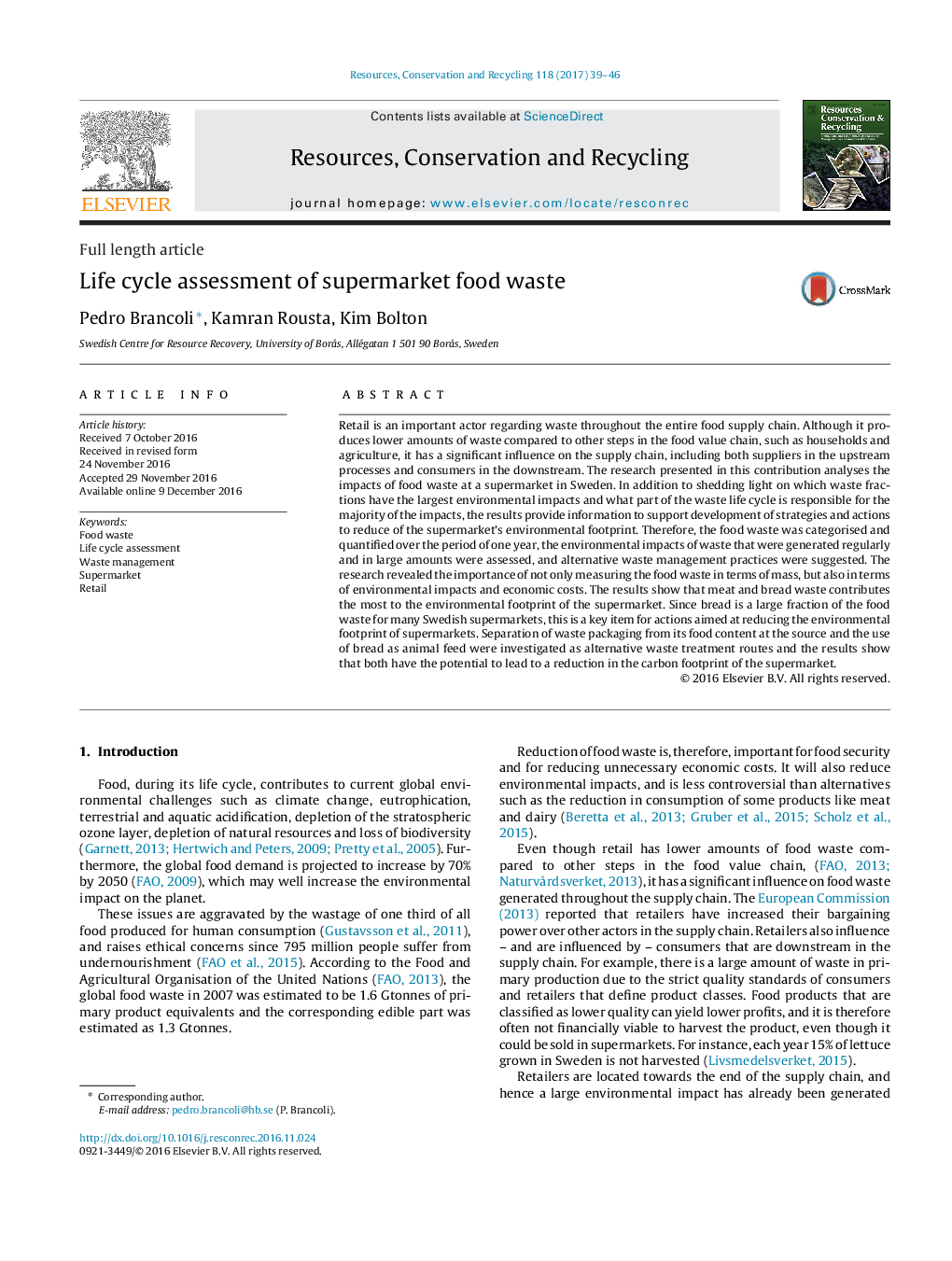| Article ID | Journal | Published Year | Pages | File Type |
|---|---|---|---|---|
| 5118867 | Resources, Conservation and Recycling | 2017 | 8 Pages |
â¢Annual bread waste has a large contribution supermarket's environmental footprint.â¢This information can be used to start actions to reduce bread waste.â¢Separate treatment of food waste and its packaging reduces the carbon footprint.
Retail is an important actor regarding waste throughout the entire food supply chain. Although it produces lower amounts of waste compared to other steps in the food value chain, such as households and agriculture, it has a significant influence on the supply chain, including both suppliers in the upstream processes and consumers in the downstream. The research presented in this contribution analyses the impacts of food waste at a supermarket in Sweden. In addition to shedding light on which waste fractions have the largest environmental impacts and what part of the waste life cycle is responsible for the majority of the impacts, the results provide information to support development of strategies and actions to reduce of the supermarket's environmental footprint. Therefore, the food waste was categorised and quantified over the period of one year, the environmental impacts of waste that were generated regularly and in large amounts were assessed, and alternative waste management practices were suggested. The research revealed the importance of not only measuring the food waste in terms of mass, but also in terms of environmental impacts and economic costs. The results show that meat and bread waste contributes the most to the environmental footprint of the supermarket. Since bread is a large fraction of the food waste for many Swedish supermarkets, this is a key item for actions aimed at reducing the environmental footprint of supermarkets. Separation of waste packaging from its food content at the source and the use of bread as animal feed were investigated as alternative waste treatment routes and the results show that both have the potential to lead to a reduction in the carbon footprint of the supermarket.
Graphical abstractDownload high-res image (165KB)Download full-size image
